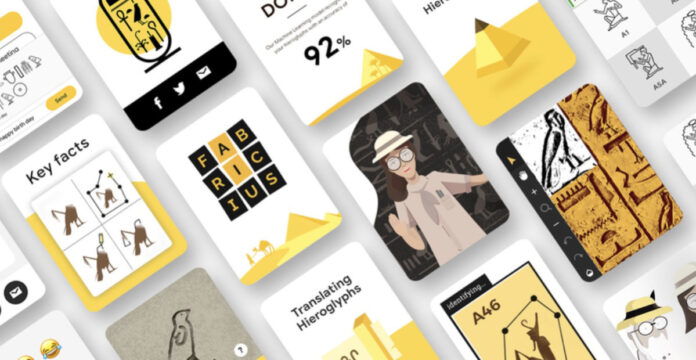Centuries ago, civilization was started along the banks of the river Nile called Egyptian civilization. Egyptians have recorded their culture and the life of their Pharaohs’ using hieroglyphs. Hieroglyphs are nothing but, pictures of objects.
To decrypt the hieroglyphs writing is a Hercules task and only a few researchers know how to do decode it. They used a black granite stone called Rosetta stone to decode the writings.
Today Google has launches AI-driven hieroglyphics translator called Fabricius. Fabricius is a first-ever AI-driven tool trained through machine language to understand what a hieroglyph is. It is available in English and Arabic. The tool is named after the father of epigraphy, the study of ancient inscriptions. It is launched as an open-source to support the developments in the study of the ancient languages.
In 2017, a game developer company called Ubisoft bought an initiative to use AI and machine learning to decrypt the language of Egyptians by collaborating with researchers from Australis’s Macquarie’s University and Google Art and Culture division.
There were five steps the entire team had worked to convert the ancient language using machine learning. The steps were pre-processing the engraves, ordering the glyphs, classifying it, identifying the word in the dictionary, and at last translating the text. The team was trained about 80,000 hieroglyphs on a machine learning drawing tool called workbench and images were trained on another tool called psycle. The company is developing a machine learning tool the workbench tool, that follows all the five steps, kind of similar to Google Translate, said Alexandra Woods senior Egyptology lecturer at Macquarie University.
The department of Ancient History of Macquarie University has signed up a Principal Academic partner for the hieroglyphic’s initiative. The professionals at Google had taken part in transitioning Hieroglyphics workbench data onto a search platform. It was this work that led to the development of a new AI-driven tool called Fabricius. This tool makes people go through the learning of ancient language writing through small educational videos. The new AI-driven tool helps to translate a word or message into hieroglyphics. These converted texts can be shared with your peers.
Using machine learning technology AutoML Google has used to create a model that can understand the Egyptian language. Google says that AutoML can identify all types of objects that a team of data scientists could do.

